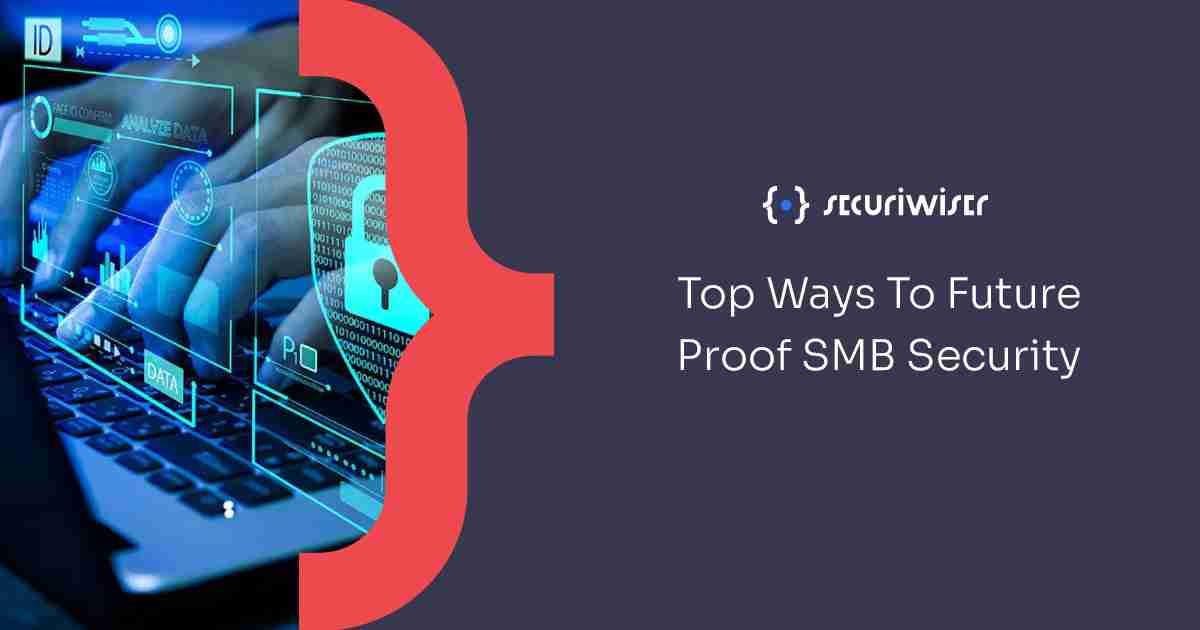Top Ways To Future-Proof SMB Security
Blog / Top Ways To Future-Proof SMB Security
3 MIN READ

40% of small businesses that suffered a security breach also suffered eight hours of downtime. Suffering a security breach can jeopardize your stakeholders' trust and can significantly impact productivity and profit. Small businesses are particularly vulnerable to security breaches - the cost of a security breach could be fatal for your business.
How can SMBs future proof their security to prevent security breaches?
A future-proof approach to security is necessary to face the challenges of the modern security climate. Keep reading to learn how to futureproof your SMB security with both digital and physical security strategies.
Implement Zero-Trust Cybersecurity
You can implement specific cybersecurity policies to prevent a security breach caused internally. Zero-trust is a cybersecurity policy to prevent internal security breaches. It does not infer that users can be trusted because they can access the network. Instead, it only allows users to access the data they need to carry out daily operations - and nothing more.
Many businesses are adopting cloud-based technologies for daily practices, which means employees can use their own devices to access company resources when working from home. If the employee’s device or network becomes compromised, this could grant a cyber attacker access to all of your company’s resources. By implementing zero-trust, you can ensure that cyber attackers only gain access to a limited amount of data if they compromise an employee network or device.
Similarly, if a disgruntled employee tries to steal company information or poach clients to start their own business, an internal security breach will only compromise a limited amount of data.
Coordinate Digital (Cyber) And Physical Security Teams
With the introduction of cloud-based technologies comes the opportunity for businesses to take a cyber-physical approach to security.
Your cyber and physical security teams can coordinate to establish integrations and automation for your security system that reduce their workload and create more efficiency for security.
When merging both teams, you can improve communication and collaboration. With cloud-based security, it can be difficult for cyber and physical teams to establish which security events fall under their jurisdiction. However, if both teams are aligned, they can take a blended approach to security for better results.
By merging both teams, you can also reduce the workload of both teams, which might highlight an opportunity to downsize your security staff.
Install Access Control And Video Security For Your Sensitive Data
Key fob security systems allow SMBs to improve building security and protect sensitive data and digital assets.
When planning your SMB security strategy, ensure that your building is secured from intruders and that your server rooms and areas housing sensitive data are protected.
Modern access control solutions provide added security for SMBs without affecting convenience for the daily user. It operates using mobile access credentials or fobs and keycards.
With mobile-first security, your users can enter with a wave of their hand - they don’t need to do anything more. The wave of their hands will trigger the access control reader to communicate with their mobile devices using remote methods. The system uses Bluetooth, WiFi, and cellular communication to ensure entry on the first attempt. Your users can enter with two steaming cups of coffee in hand, and your security system won’t slow them down as they travel through the building.
Having convenient access control allows you to install access restrictions at your entrance and throughout the building. To ensure your access control system provides air-tight security, you might consider integrating access control and video security.
Video security integrates with access control to provide quicker identity verification - eliminating the possibility of stolen or hacked access credentials being used for entry in a cyber attack. A video intercom reader provides an access reader and video camera in a single device. Your security team and system administrators can then view access logs alongside video information to verify the identity of users before they enter the building.
Enable identity verification for areas that house your SMB's most valuable and sensitive digital resources, using physical security technology to support digital security.
Automations And Workflows For Improved Efficiency
Applying AI to your cybersecurity practices can help you to automate processes and increase efficiency. Here are some of the best applications of AI for security:
- Automated threat detection - AI and analytics can screen your security data for anomalies, triggering alerts when a threat is detected.
- Automated identity verification and biometrics - to ensure employee credentials are used appropriately, you can implement automated identity verification to ensure employees are who they claim to be before accessing the network.
- Automated workflows - when your system detects a cybersecurity threat, you can automate workflows using AI to ensure quick incident response and effective task prioritization. Suppose there is a threat detected in your system. In that case, you can establish workflows of the response protocols in line with your security strategy and assign these workflows to individuals in your security team.
SMBS Need To Emphasize Stringent Security.
Preventing security breaches is essential to ensure your business does not suffer losses and to encourage the trust of your stakeholders. The future of security is cloud-based, and this comes with a need to combine physical and digital security for a blended and strengthened approach.
Written by: Emila Smith
Emila Smith is a freelance writer who is interested in tech and legal trends.
How secure is
your school?
Blog categories
How secure is
your school?